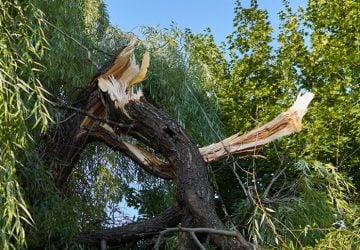- Published on
Mastering the Craft of Tree Pruning: Beyond Simple Trimming
Mastering the Craft of Tree Pruning: Beyond Simple Trimming
In the steel and concrete landscapes that serve as habitats for many, trees offer a slice of nature's refuge to both animals and city residents. To maintain these leafy giants in a condition that is both safe and sound, systematic and skilled tree trimming is a crucial municipal function. We will explore the significance of tree trimming and how it contributes to the sustainability of a city's tree population, which is both lush and picturesque.

Trees in city settings don't have the luxury of growing unaided as they would in wild forest areas; human intervention is necessary for them to flourish. Trimming goes beyond just improving the tree's appearance — it's vital for its overall well-being and the safety of the surrounding community. Neglected, overgrown branches can be a hazard to electrical lines, structures, and those walking nearby. Additionally, without timely trimming, trees may suffer from structural weaknesses, increasing the risk of collapse. Trimming works as a preventative health measure for trees, comparable to a regular medical check-up. It allows arborists to spot and remove any diseased, decaying, or deceased limbs early on, preventing further decay and infestations. Professionals can prune strategically to thin out the tree's crown, ensuring adequate light and air flow among the branches, which strengthens the tree's structure and helps ward off diseases. Proper trimming is a calculated process that demands precise timing and techniques tailored to the specific tree species. Late winter or early spring is often the best period to prune for many types of trees since they are usually in a dormant state, reducing stress from pruning activities. Depending on the tree's needs and the landscaping objectives, various techniques such as cleaning (cutting away dead or infected branches), thinning (lessening the canopy's density to allow light and air in), or raising (trimming lower branches to make space underneath) are applied. Pruning also encompasses an artistic dimension; beyond just the technical know-how needed for safe branch removal, it involves sculpting the tree's future growth to enrich its natural silhouette. Adeptly pruned trees can become living art pieces, contributing to the visual appeal of urban streets, parks, and gardens. This creative side of pruning shines in specialized practices like topiary and espalier, where trees and shrubs are meticulously shaped into decorative designs. When it comes to the precision needed in pruning, the complexity of the task is often undervalued, making it a job typically best suited for professionals. Trained arborists possess an in-depth understanding of tree biology and carry out pruning procedures without causing unnecessary harm or stress to the tree. Their expertise guarantees that each incision is purposeful, with respect to the tree's continued health and growth trajectory. In the context of city life, the role of tree trimming cannot be ignored. It upkeeps the tree's vigor, elevates its aesthetic, and safeguards the public. By securing professional tree trimming services, urban centers and property owners are investing in the enduring vitality and allure of their valuable green spaces, ensuring their preservation for future enjoyment.